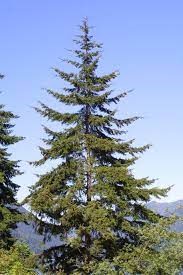Secwepemc name: tsq’ellp; boughs: qweltsen
A number of plants were used as scents or cleansing agents, most prominent among them Rocky Mountain juniper, Douglas-fir boughs and wild rose bushes. Such plants played an important role in the handling of the dead and for caring of sick people. Used as a smudge, a washing solution, or as a purifying steam, they served as physical and spiritual disinfectants. Children liked to chew the pitch as “chewing gum”. Douglas-fir was an important tree and provided many useful types of materials. The wood was, and still is, a good fuel. The logs were used in construction for houses and temporary lodges. The boughs, which are soft and dense, were a preferred material for bedding. The boughs can also be used for covering the floor of a cabin or sweat lodge, or when you are swimming and do not want to get your feet dirty, as a cushion in a canoe to keep from getting wet, or for covering a frame as a crude shelter when camping. Douglas-fir poles were used for the shafts of salmon harpoons. Douglas-fir pitch was an important medicine, known to almost everyone. James Teit (1909) recorded important details of the use of fir boughs in ritual purification and cleansing. Fir branches were used to bathe twins, who were believed to be supernaturally powerful for their first four years of life ; twins later continued to wash themselves with water in which fir branches had been dipped.
Ecological requirements
Not usually common in floodplains, prefers dry, well-drained, silty soils. Will tolerate some shade but needs sunlight also
![]()

